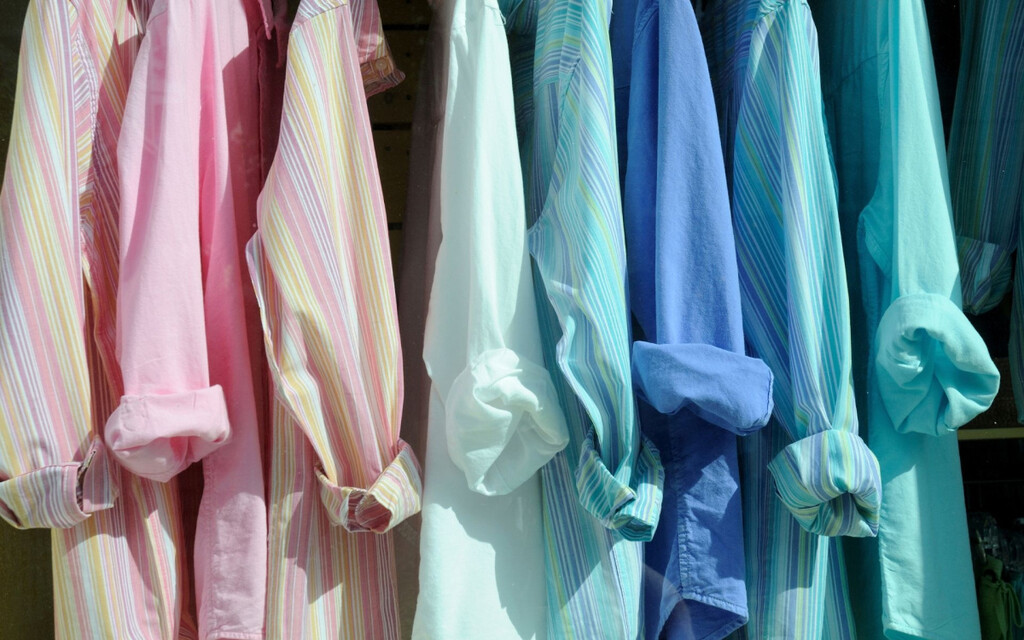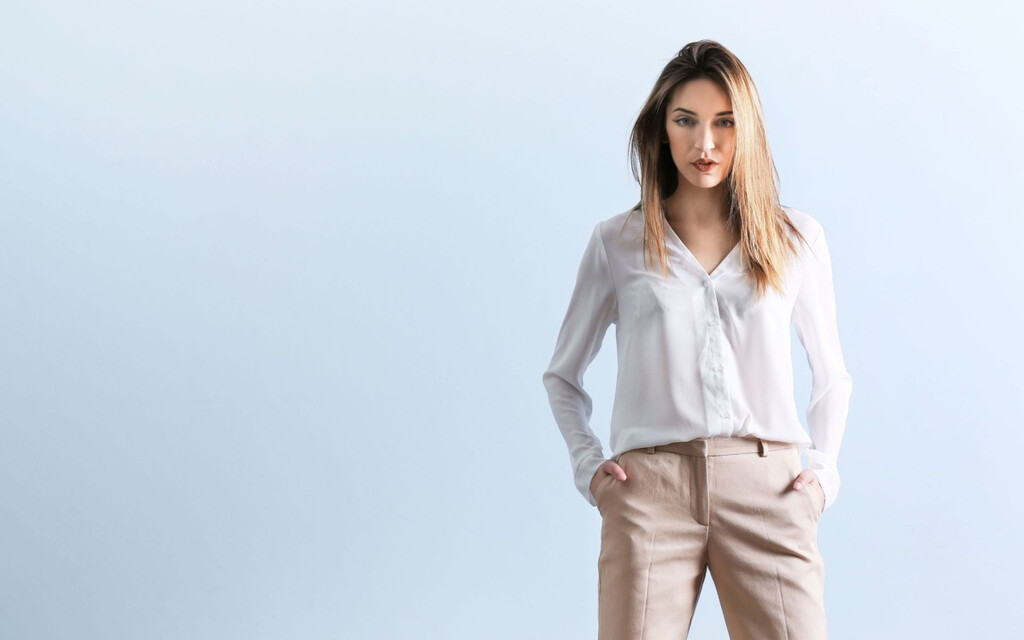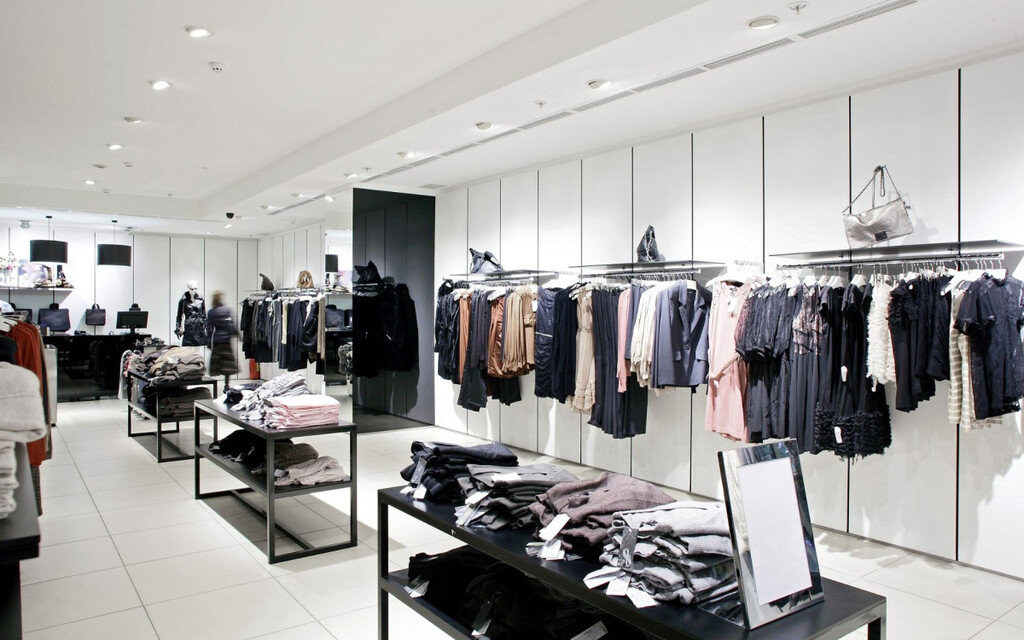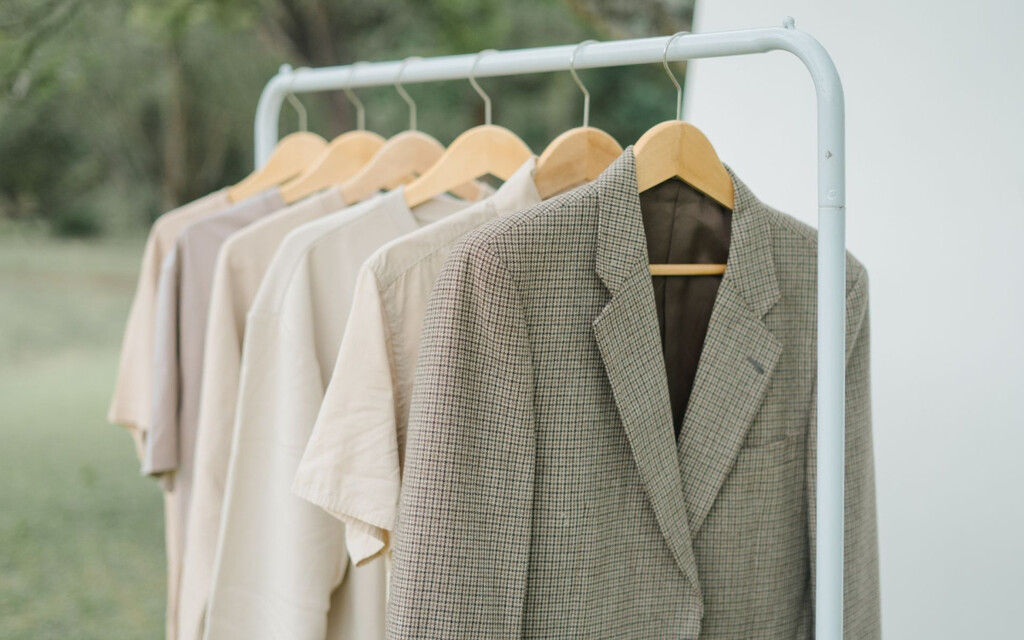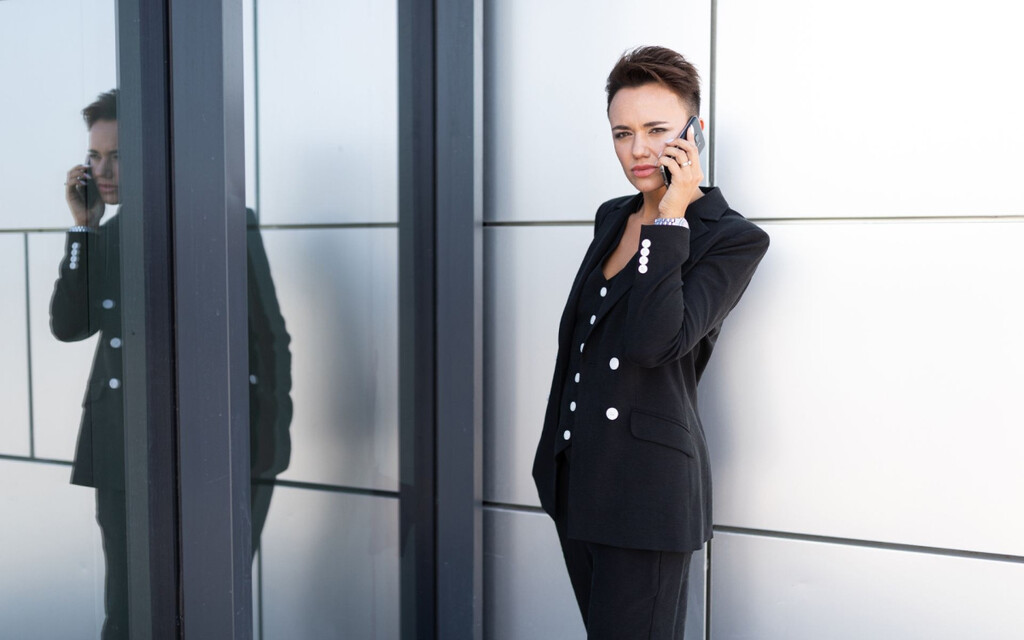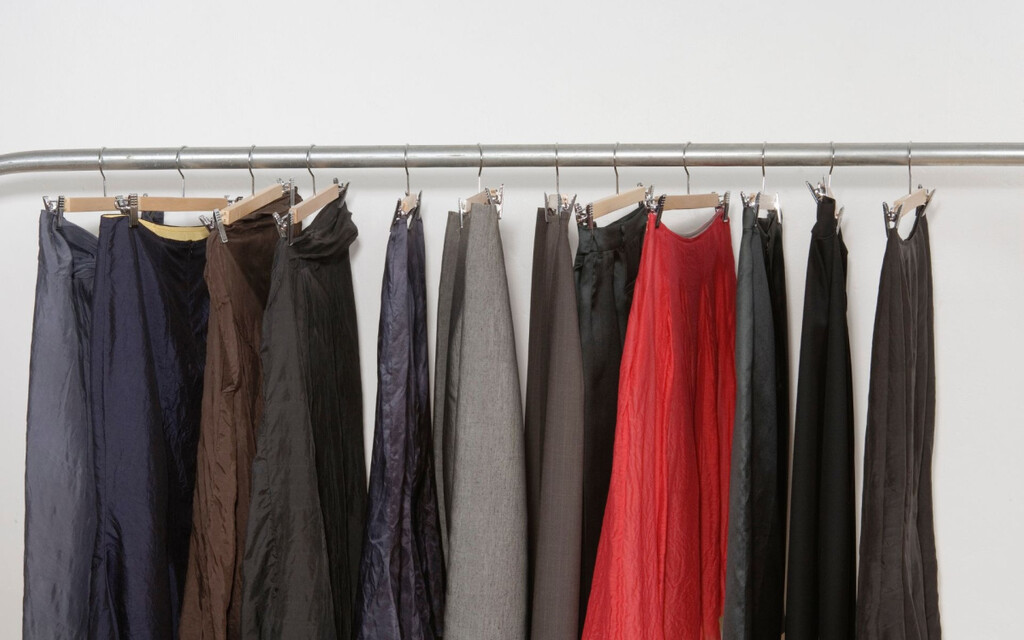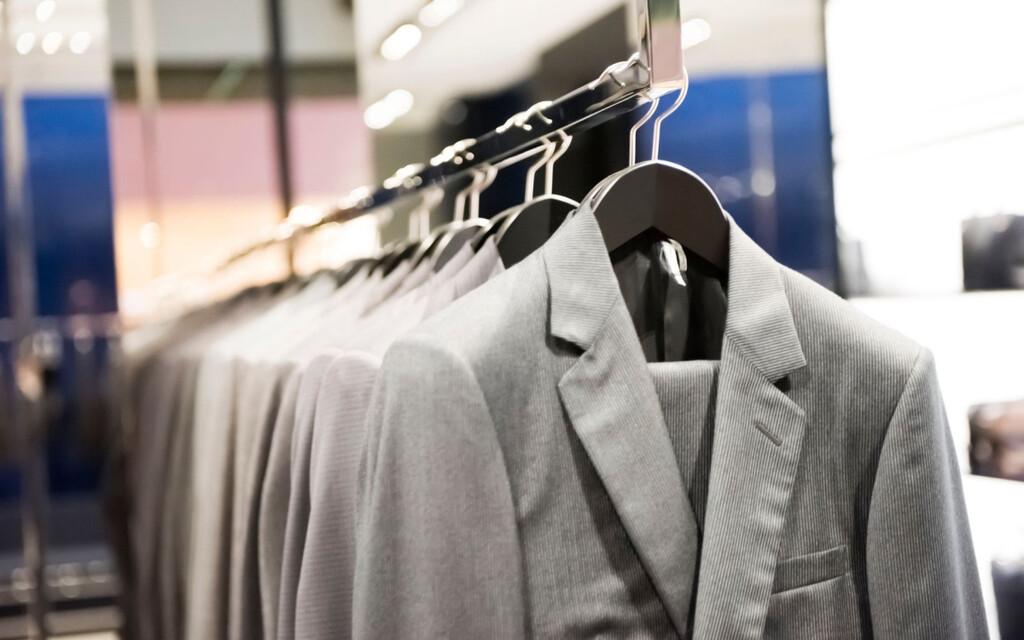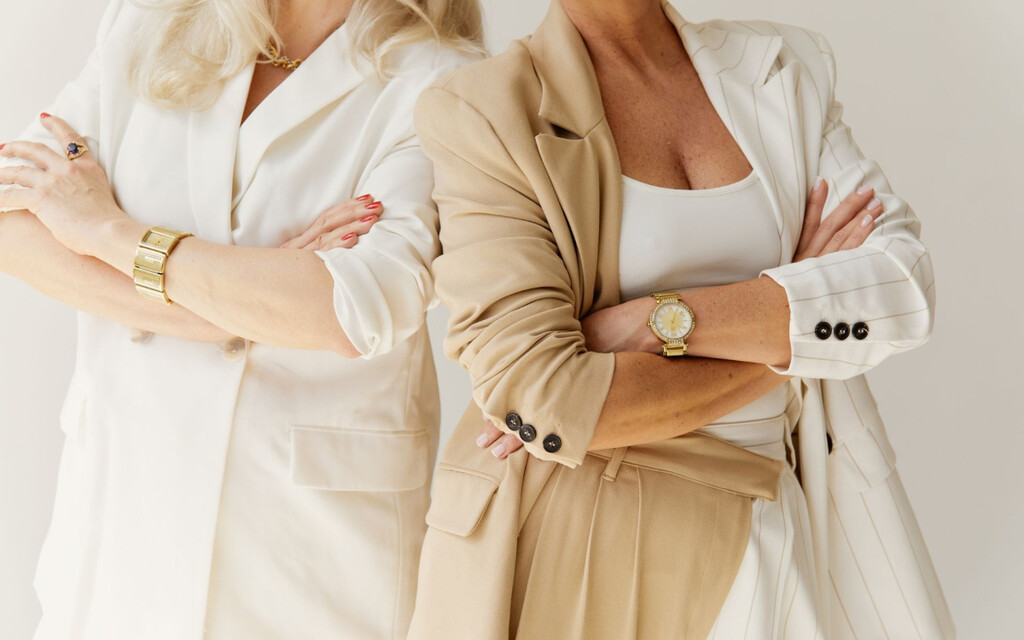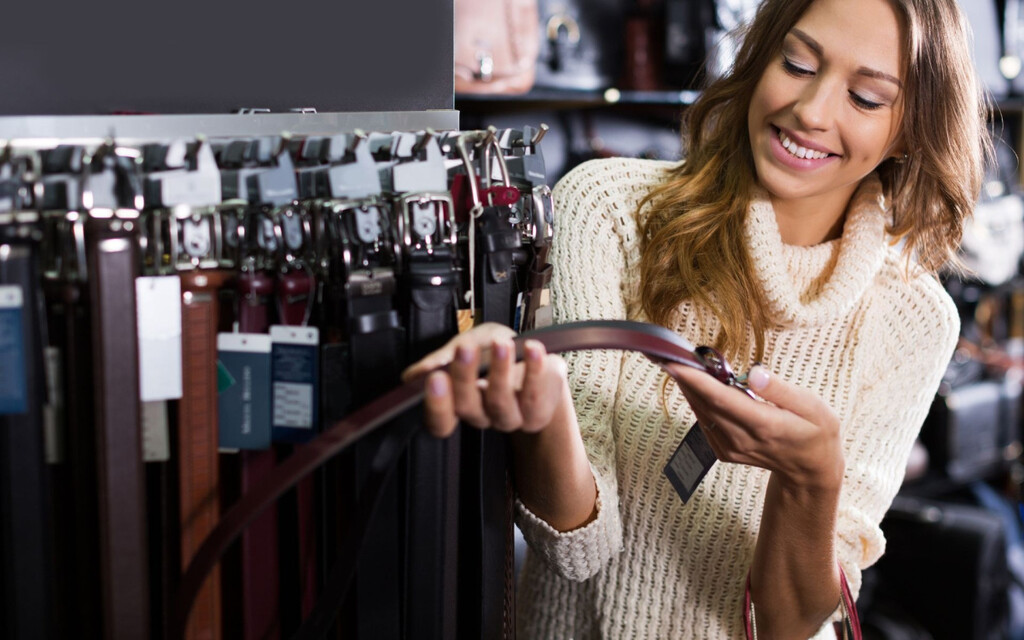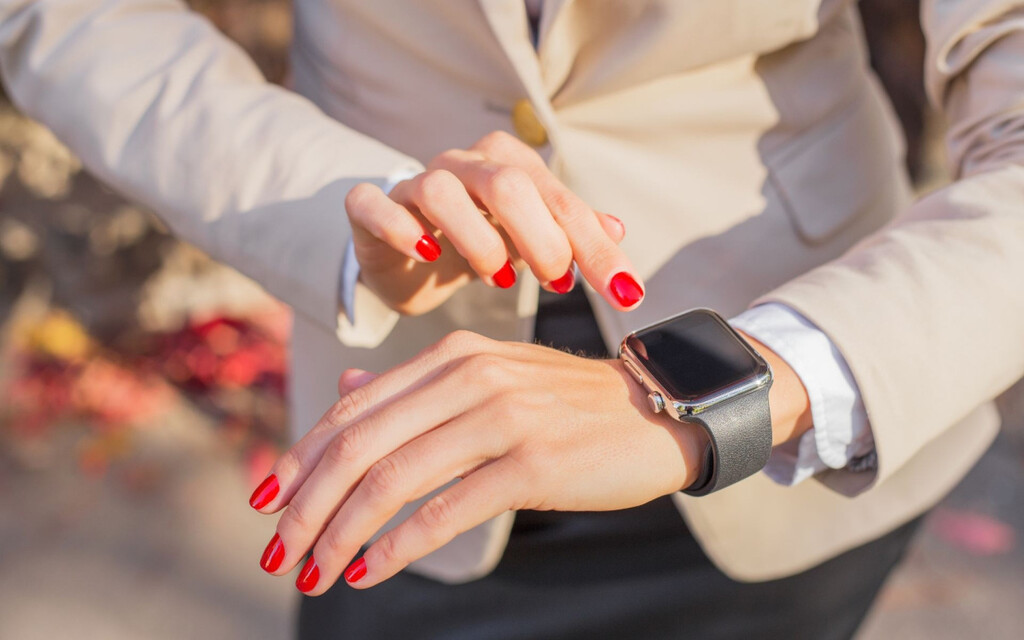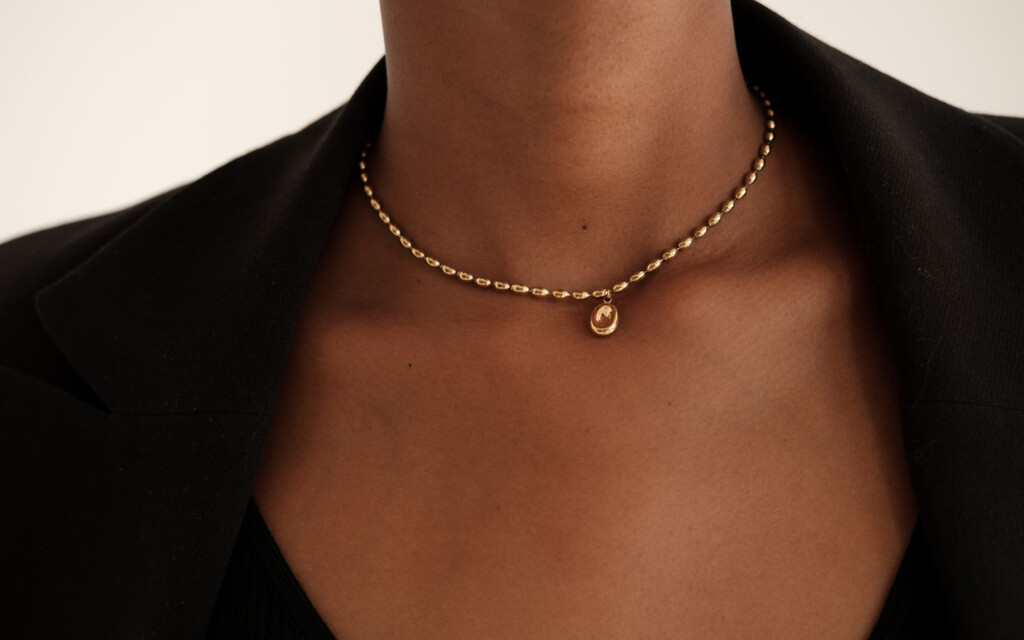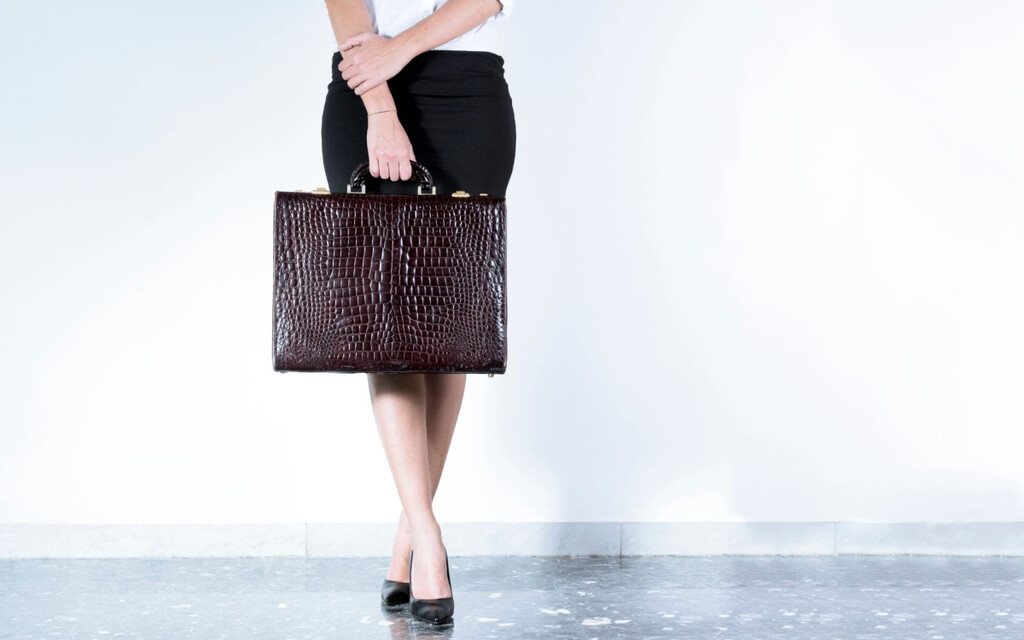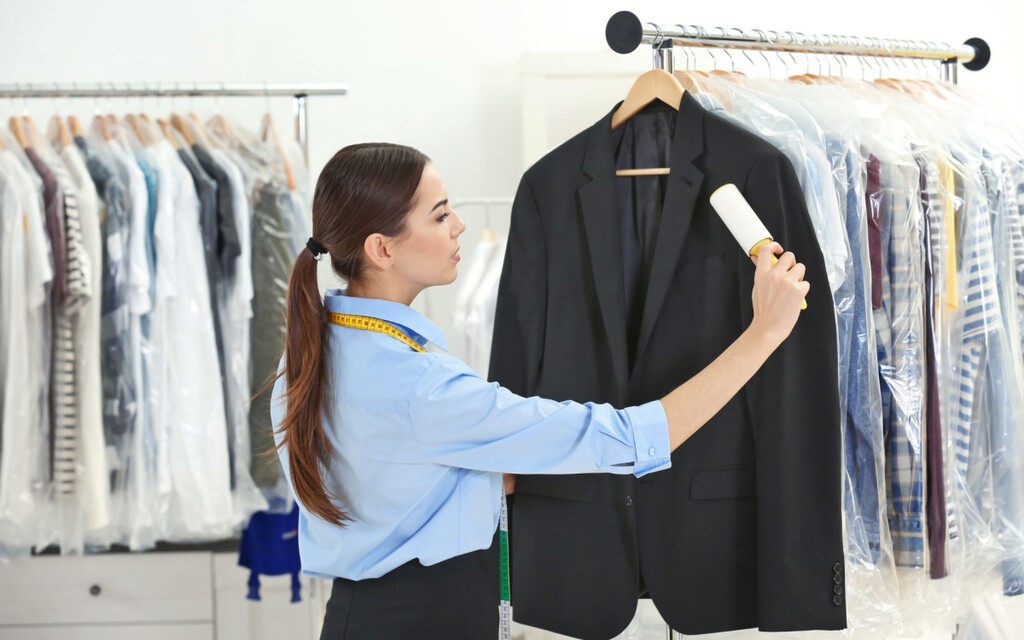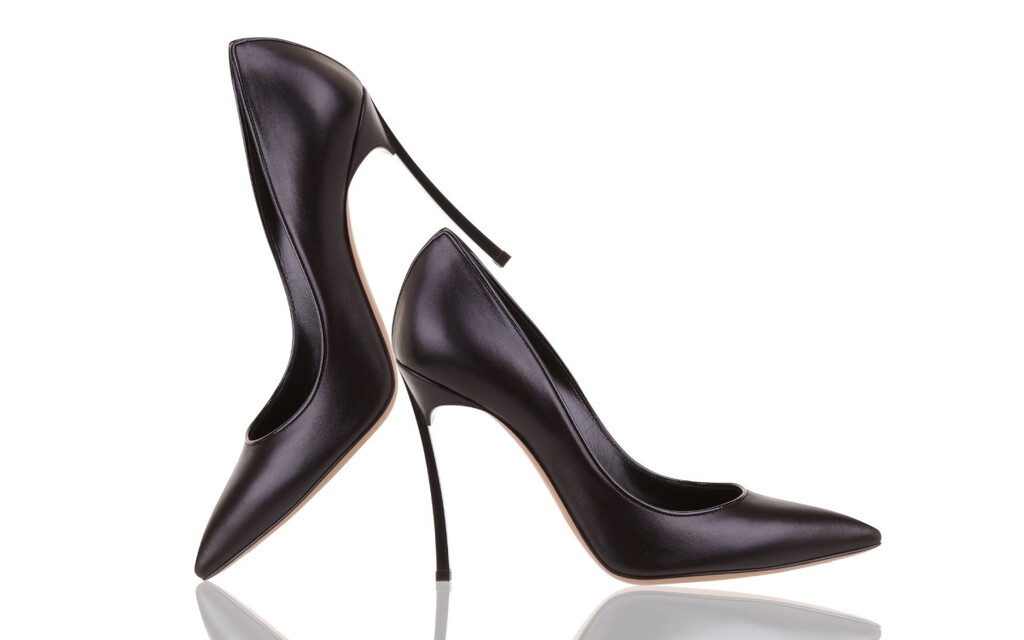Dress code varies from company to company and before you go shopping for your work clothing, you should get informed about the preferred dress code in your particular workplace. Some companies insist on the traditional professional look while others are more relaxed about it. In any case, the amount of room you have for expressing your individuality and personal style will depend on this.
Whether the dress code is strictly business professional or not, you still have many options to express yourself in the corporate chic way. The key to your style is various combinations of work clothes, accessories and jewelry. If you get good at matching pieces in a way that is not traditional and ordinary yet stylish and elegant, you are on the right track. A good rule of thumb is to keep the business appearance more dominant than the outfit.
You could start experimenting with the business casual look if the circumstances allow, it is a prevalent trend nowadays, which keeps things somewhere between too formal and casual. This style lets you be creative and stylish within the framework of your business look. Here is what you will need to build a professional work wardrobe.
Blouses and Tops
Blouses and tops are a staple in any professional wardrobe, and it is essential to choose the suitable styles and fits to dress appropriately in the workplace. Understanding the dress code, choosing the right materials, and combining pieces create a polished look. Whether you’re just starting out in your career or looking to upgrade your style, all this will help you look and feel your best in the office.
1. Choose Appropriate Fabrics
Fabrics can greatly affect the overall look and feel of your outfit, and it is important to consider factors such as comfort, durability, and professionalism when selecting.
When dressing professionally for the workplace, it’s best to opt for high-quality, durable fabrics that are comfortable to wear for long periods. Natural fibers, such as cotton, linen, and silk, are suitable for blouses as they are breathable and easy to care for. Synthetic fibers, such as polyester and rayon, are also popular choices for workwear as they are often wrinkle-resistant and durable.
It’s important to keep in mind that some fabrics are more formal or casual than others when dressing professionally in your workplace. For example, a silk blouse is often considered more formal and appropriate for a professional setting, whereas a cotton T-shirt is more casual. Similarly, lightweight fabrics like chiffon or lace may not be suitable for the workplace, as they can appear too revealing or informal.
2. Avoid Distracting Patterns and Colors
Avoiding distracting patterns and colors is crucial to dressing in a professional setting. In addition, this helps to maintain a professional and polished appearance that projects confidence and competence.
It is best to stick to classic, solid colors like black, navy, white, and gray in a professional environment. These timeless and versatile colors make them an excellent option for any professional setting. If you would like to add a pop of color, consider incorporating a neutral hue like beige, brown, or olive. These colors are understated yet still bring a touch of interest to your outfit.
Read also – 8 Important Actions That Will Make You More Successful
3. Mind the Neckline
The neckline can significantly impact the overall appearance of an outfit and can convey professionalism or distract from it. Therefore, it is essential to consider factors such as the company’s dress code, the formality of the occasion, and the body type when choosing a neckline.
When choosing a neckline, it is important to avoid anything that may be revealing or distracting. This can include low-cut necklines or styles that expose too much skin. Additionally, certain necklines, such as off-the-shoulder styles, can be distracting or inappropriate in a professional setting.
If you work in a more formal workplace, opting for classic necklines such as a high collar or a simple round neckline is best. On the other hand, if your workplace is more relaxed, you may be able to incorporate a more playful or trendy neckline. It is always important to ensure that your outfit fits well and is not too tight or loose.
4. Consider Sleeve Length
Sleeve length can affect the overall look of an outfit and make a big difference in style and professionalism. When choosing the sleeve length of a blouse, there are a few things to keep in mind.
Firstly, it is important to consider the dress code of your workplace. For example, some workplaces have strict dress codes that require sleeves to reach the wrist, while others are more relaxed and allow for shorter sleeves. Another important factor to consider when dressing professionally in your workplace is the season. During the warmer months, short sleeves or sleeveless blouses are more appropriate, while during the cooler months, long sleeves are more suitable.
In terms of professionalism, opting for blouses with sleeves that reach the wrist or just below is generally recommended. This length is considered appropriate and professional in most workplaces, and it is a safe choice for those who are unsure about the dress code. However, if you prefer to wear blouses with shorter sleeves, you can still achieve a professional look by pairing them with a blazer or cardigan. This will help balance the shorter sleeves and create a more put-together look.
5. Find the Right Fit
Choosing tops that fit properly is important. When shopping for blouses and tops, it is important to try them on and pay close attention to the fit. Ensure that the blouse fits comfortably around the neck, shoulders, and arms and that it is not too tight or loose in these areas. If you are shopping for a blouse with buttons, ensure that the buttons are not gaping or pulling at the fabric, which can also look unprofessional.
Another important aspect of finding the right fit for blouses is considering your body shape. Different body shapes may require different fits, and it is important to find a blouse that flatters your shape. For example, if you have a larger bust, you may want to choose a blouse with a higher neckline and darts to provide more support and create a flattering shape. However, if you have a smaller bust, you may want to opt for a blouse with a more relaxed fit and a lower neckline.
Pants and Skirts
Pants and skirts make or break the business look so you have to get this one right. Dressing pants and skirts professionally in the workplace requires paying attention to the fit, color, fabric, style, and details of your pants. Choose high-quality, neutral-colored pants in a style appropriate for your workplace, and make sure they fit well and look polished and put together.
6. Choose Your Fit
The right fit enhances your appearance and exudes confidence, making you look and feel good. Regarding pants, the right fit should allow you to move freely while still hugging your waist and hips. The waistband should sit comfortably and not slip down, while the legs should have a slight taper or straight cut, avoiding a baggy or tight appearance. When trying on pants, sit, bend, and walk around to test their comfort and fit.
Skirts should also fit properly, sitting comfortably on your waist and hips and falling just above or below the knee for a professional look. A-line, pencil and wrap skirts are popular choices for the office. When trying on a skirt, ensure it is not too tight when you sit and move around, and ensure that the hemline falls at a suitable length for your workplace dress code.
7. Opt for Neutral Colors
Another one of the essential tips for dressing professionally in your workplace is opting for suitable colors. Neutral colors such as black, navy, brown, and gray are safe choices and can easily be paired with other items in your wardrobe.
These colors are versatile and timeless and have a classic and sophisticated look that can help you achieve a professional appearance. Furthermore, they are less likely to draw attention away from your work and can help you appear more confident and put together.
8. Consider the Fabric
When it comes to dressing professionally in your workplace, choosing the suitable fabric for your pants and skirts is also significant. The fabric you choose can impact the look of your attire and its comfort and functionality.
Opt for high-quality, durable fabrics that can withstand repeated wear and washing when selecting pants and skirts. Wool, cotton, and polyester are all good choices as they are easy to care for and maintain shape. Avoid fabrics prone to wrinkling or fading, as these can detract from your professional appearance.
In addition, consider the weight and drape of the fabric. Heavy, stiff materials can be restrictive and uncomfortable, while lightweight, flowy fabrics can be too casual for the workplace. Look for fabrics that fall in the middle, such as lightweight wool or mid-weight cotton, as these will provide the perfect balance of comfort and professionalism.
It’s also essential to think about the texture of the fabric. A smooth, polished material can give a more professional look in your workplace, while a rough, textured fabric can look more casual. This is especially important when choosing dress pants or skirts, as you want to achieve a polished and put-together look.
9. Choose the Right Style
The right style can help you achieve a polished and put-together look, while the wrong style can detract from your professional appearance. Opt for classic styles such as straight leg, bootcut, or wide leg for pants. These styles are timeless and versatile and can easily be paired with various tops and shoes. Avoid trendy styles, such as skinny or flare pants, as these can be too casual for the workplace.
When it comes to skirts, choose styles appropriate for the office, such as pencil, A-line, or wrap skirts. These styles are flattering and can be paired with various tops and shoes. Avoid mini-skirts or skirts with a lot of ruffles or embellishments, as these can be too distracting and unprofessional.
It’s also important to consider the length of your pants and skirts. Pants should be long enough to cover your shoes but not so long that they drag on the ground. Skirts should be knee-length or just above the knee, which is considered appropriate for most workplaces.
10. Pay Attention to Details
Whether you are dressing for a job interview, a business meeting, or just your daily routine, paying attention to the fit, style, and material of your pants and skirts can help you make a positive impression and communicate your attention to detail.
When it comes to pants, fit is key. Pants that are too tight, too loose, or too short can be distracting and make it difficult for you to move comfortably. Ensure that your pants fit well at the waist and hips and are the right length. Avoid pants with frayed hems, torn pockets, or worn-out fabric. A well-fitted pair of pants in a neutral color, such as black, navy, or gray, can be a versatile and professional choice.
Skirts can also be a key part of a professional outfit in your workplace, but choosing the right style and length is important. Skirts that are too short, too tight, or too revealing can be distracting and unprofessional. Instead, opt for skirts that hit just above or below the knee and have a clean and straightforward style. Neutral colors like black, navy, and gray are safe, but you can also add a pop of color with a patterned skirt.
Suits, Blazers and Jackets
Suits are the staple of any work wardrobe, both pants suits and dress suits. You can wear them matched or separate them and wear skirts in combination with different color blouses and jackets for a more creative look. Blazers and jackets are also essential pieces in a professional wardrobe, and it’s important to know how to wear them properly to look sharp and put together.
11. Choose the Right Fit
Choosing the right fit is crucial when it comes to professionally dressing in suits, blazers, and jackets. The way a suit or jacket fits can greatly impact how you look and feel and can make all the difference in making an excellent first impression.
When dressing a suit or jacket professionally in your workplace, check the fit of the shoulders, as they should fit snugly and not slip or bunch up when you move your arms. The sleeves should also fit well and be the right length, while the pants should be the right length and break appropriately over your shoes.
Additionally, consider the suit’s or jacket’s cut when choosing the right fit. A modern cut is slimmer and more tailored, while a classic cut is more relaxed and roomier. Consider your body type and personal style when deciding, and try on several styles to find the one that fits you best.
12. Stick to Neutral Colors
Sticking to neutral colors is an important aspect of dressing professionally in suits, blazers, and jackets in the workplace. By choosing colors that complement your workplace, you can create a classic and sophisticated look that will help you make a good first impression and feel confident in your attire.
Neutral colors such as black, navy blue, gray, and beige are timeless and versatile and can be easily paired with a variety of other colors and patterns. Opting for these colors allows you to create a classic and sophisticated look appropriate for most professional settings.
When selecting a suit, blazer, or jacket in your workplace, take into consideration the colors that are most common in your workplace and choose colors that complement the tone of your organization. If unsure, it’s always safe to wear a classic navy blue or black suit, which can be easily dressed up or down depending on the occasion.
13. Pay Attention to the Details
Paying attention to the details is essential to dressing professionally in the workplace. Whether you are wearing a suit, blazer, or jacket, paying attention to small details can make a big difference in how you present yourself and can greatly impact your overall appearance and professionalism.
When wearing a blazer or jacket, pay attention to the buttons. Make sure that the buttons are fastened, and if there are additional buttons, fasten those as well. This small detail can greatly improve the overall appearance of your attire. In addition, your tie should be straight and your cufflinks in place.
14. Dress for the Occasion
Dressing for the occasion is an essential aspect of dressing professionally in the workplace. Whether it’s a job interview, a business meeting, or a day at the office, choosing the right attire for the occasion can greatly impact your overall appearance and professionalism.
When selecting your attire, it is essential to consider the type of event you will be attending. For formal occasions, a suit is usually the best option, with a dress shirt, dress shoes, and a tie. On the other hand, a blazer or a jacket with dress pants and dress shoes will suffice for more casual events. Remember, how you dress says a lot about you, so ensure you are sending the right message.
Accessories
Sometimes accessories and jewelry are our only way to express our taste, but even so, we should not go overboard. Accessories can play a significant role in enhancing your professional image in the workplace. From belts and shoes to watches and jewelry, these small details can greatly impact your overall appearance.
15. Choose a Leather Belt
A leather belt is a classic accessory that can help to complete your professional look in your workplace. It is important to choose a belt that is the same color as your shoes, as this creates a cohesive look that is stylish and polished. Avoid overly flashy or decorative buckles, and opt for a clean, simple buckle that won’t distract from the rest of your outfit.
When selecting a leather belt, ensure it fits well and is the right size. Belts that are too loose or too tight can detract from the overall appearance of your outfit, so take the time to measure your waist and choose a belt that fits properly. A belt that fits well should be snug around your waist without being uncomfortable or digging into your skin.
Regarding material, leather is a popular choice for belts, as it is durable and stylish. Choose a high-quality leather that is well-constructed and has a smooth finish. Avoid belts that are too stiff or too flexible, and opt for a leather belt that is both comfortable and supportive.
16. Opt for a Simple Watch
A watch is an essential accessory that can complete your professional look in the workplace. When choosing a watch, it’s important to opt for a simple and timeless design that won’t detract from the rest of your outfit. Avoid watches that are too flashy or ornate, and opt for a watch that has a classic, understated design.
In terms of material, a leather strap is a popular choice for a professional watch. It is comfortable to wear and durable, making it a good choice for daily wear in the workplace. Additionally, a leather strap can be easily replaced if it becomes damaged or worn, ensuring that your watch always looks its best.
When selecting a watch for the workplace, it’s also important to consider its features. A watch with a simple, easy-to-read face and a reliable quartz movement is a good choice, as it will be both functional and stylish. Avoid watches that are too complex or have too many features, as these can be distracting and may not be suitable for a professional dress code.
17. Keep Jewelry Simple
Keeping jewelry simple is a key aspect of dressing professionally in the workplace. While jewelry can add a touch of personal style to your outfit, choosing pieces that are understated and appropriate for a professional dress code is important. Avoid jewelry that is too bold, flashy, or distracting, and opt for simple, classic pieces that complement your outfit without overwhelming it.
Choose jewelry that is made of high-quality materials, such as gold, silver, or stainless steel. These materials are durable and long-lasting and can help to create a polished and professional look. Additionally, opt for well-designed jewelry that has a smooth finish, as this will help ensure that your jewelry is comfortable to wear and looks its best.
In addition, it’s important to consider the formality of your workplace and the type of jewelry that is appropriate for your industry. Avoid over-accessorizing, and choose simple, elegant, and appropriate jewelry for the professional setting. For example, a watch, a pair of stud earrings, or a simple necklace may be appropriate, while large statement pieces or multiple rings may be distracting and too casual.
18. Accessorize with a Briefcase or Portfolio
Accessorizing with a briefcase or portfolio is a great way to complete your professional look in the workplace. Not only do these accessories serve a practical purpose, but they also demonstrate your attention to detail and help to create a polished, put-together look.
When choosing a briefcase or portfolio, it’s important to consider both functionality and style. A high-quality briefcase or portfolio should be durable, able to withstand daily use, and spacious enough to carry all of your essentials. Additionally, it’s important to choose a design that complements your personal style and fits the formality of your workplace.
Leather is a popular choice for a briefcase or portfolio, as it is durable and stylish. Instead, opt for a neutral color, such as black or brown, that will match well with a variety of outfits. Additionally, consider the hardware and other details on your briefcase or portfolio, such as the type of closure, the number of compartments, and the type of handles. These details can help to create a polished and professional dress code.
Top General Tips to Look Your Best in Your Workplace
Looking your best in the workplace can positively impact your professional image and help you make a great impression on colleagues and clients. Whether you are dressing for a business meeting, giving a presentation, or simply working at your desk, there are several general tips that you can follow to ensure that you look your best.
19. Ensure that Clothing is Clean, Pressed and Well-Fitted
Ensuring that your clothing is clean, pressed, and well-fitted is critical to looking your best in the workplace. These simple steps can help you create a polished and professional appearance and make a positive first impression on your colleagues and clients.
First and foremost, make sure that your clothing is clean and free of any visible stains or marks. Regular laundering and proper stain removal techniques can help to keep your clothing looking its best. Additionally, consider having your clothes professionally dry-cleaned or pressed to help remove any wrinkles or creases.
Check that your buttons are fastened, your zippers are closed, and your shoelaces are tied. Pay attention to small details such as the cuffs and collars of your shirts and the hems of your pants. These details can make a big impact on your overall appearance.
20. Remove Facial and Body Piercings
Removing facial and body piercings is a practical consideration when looking your best in the workplace. While piercings may be a personal expression of style and individuality, they can also be seen as unprofessional in certain work environments.
By removing piercings, you can present a more professional image that is in line with the dress code and expectations of your workplace. This can help you make a positive first impression and be taken seriously by your colleagues and clients.
It’s important to note that some workplaces have specific policies regarding piercings and other forms of body modification. Therefore, before removing piercings, it’s a good idea to review your company’s dress code and understand any restrictions that may apply.
21. Invest in High-Quality Shoes
Investing in high-quality shoes is critical to dressing professionally in the workplace. Shoes can often be the first thing people notice about your outfit, and a well-made pair of shoes can make a lasting impression. When selecting shoes for the workplace, it’s important to choose a style that is appropriate for your industry and the formality of your workplace.
Opt for leather shoes in neutral colors, such as black or brown, as these colors are timeless and versatile. Leather shoes are also durable and can withstand the wear and tear of daily use. Additionally, invest in shoe trees to help maintain the shape and structure of your shoes and ensure they are clean and well-maintained.
When choosing shoes for the workplace, it’s important to consider comfort and style. Make sure that your shoes fit well and provide adequate support, especially if you spend a lot of time on your feet. Avoid shoes that are too tight or loose, and opt for shoes with cushioned soles and a supportive footbed.
22. Cover Visible Tattoos to Avoid Distraction
Covering visible tattoos is a practical consideration when looking your best in the workplace. While tattoos may be a personal expression of style and individuality, they can also be seen as distracting or unprofessional in certain work environments.
By covering tattoos, you can present a more professional image that is in line with the dress code and expectations of your workplace. This can help you make a positive first impression and be taken seriously by your colleagues and clients.
It’s important to note that some workplaces have specific policies regarding tattoos and other forms of body modification. Covering tattoos can be as simple as wearing clothing that covers the tattoo or using a skin-toned bandage or makeup to conceal the tattoo. It’s important to choose clothing and cover-ups that are appropriate for the workplace and that match the dress code.
23. Less is More
The principle of “less is more” is an important consideration when it comes to looking your best in the workplace. This principle emphasizes the importance of simplicity and restraint in appearance and attire.
By keeping your look simple and understated, you can present a professional image that is in line with the expectations of your workplace. This can help you make a positive first impression and be taken seriously by your colleagues and clients.
One of the key aspects of the “less is more” principle is avoiding over-accessorizing. This means avoiding excessive jewelry, busy patterns, or loud colors that can distract from your overall look. Instead, opt for simple, understated accessories that complement your outfit and add a touch of elegance.
24. Perfume Should Never be Strong
Perfume should never be overpowering or distracting in the workplace. A strong scent can be intrusive and disruptive to others and can also detract from your overall professional appearance.
Instead, opt for a light and subtle fragrance, or forgo fragrance altogether, especially in settings where close contact with others is required. Remember that some people may be sensitive to fragrances or have allergies, so avoiding strong scents is a considerate choice.
Additionally, be mindful of applying fragrances in moderation, as too much can quickly become overwhelming. When it comes to professional appearance in the workplace, less is often more, which also applies to fragrance.
It all comes down to planning, making beautiful combinations and keeping your business appearance more important than your personal style. Experiment, practice and you will find the right balance.





